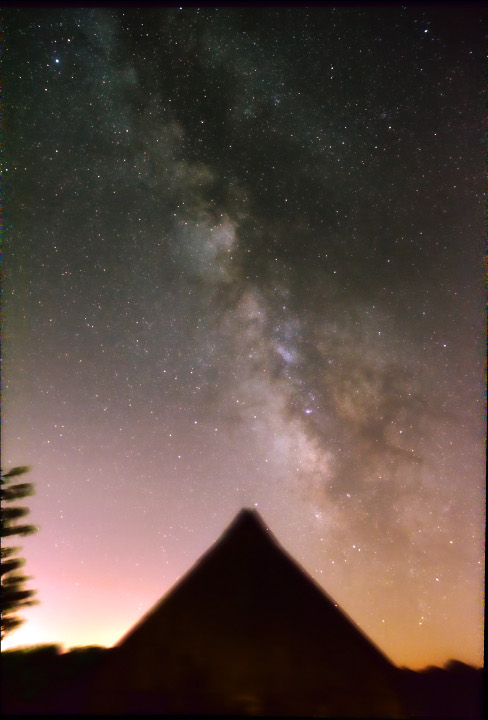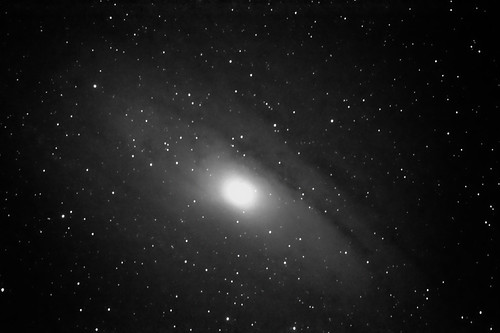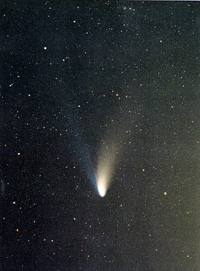People often ask me, “Doug, why do you live so far out in the country? Wouldn’t it be easier if you lived closer to campus?” Well, sure my commute would be a bit shorter, but then I’d never see night skies like this from my driveway.

During late summer and early fall, if you look to the south in the evening, around 9-10ish, you’ll see the constellation Sagittarius, or more likely a subset of it the asterism of The Teapot. When you’re looking at The Teapot, you’re also looking toward the central core of our galaxy and the disc of our galaxy will extend almost straight upward from it. If you live in the city, this magnificent view will be denied to you by the copious amounts of light pollution from street lights and security lights. In order to get the view I get to see every clear night, you have to drive away from the reach of all those city lights. Getting to see the night sky like this is well worth the extra commute time for me!
This photo is a combination of 28 images each taken at a focal length of 18mm with an aperture f/5.6 and a shutter speed of 6 seconds at ISO 3200. I simply sat the camera on a tripod, locked down the shutter button, and walked away for a while. The images were combined using Deep Sky Stacker, a piece of freeware that automatically rotates and aligned a stack of individual images. It doesn’t take a fancy camera, just patience and good skies.





